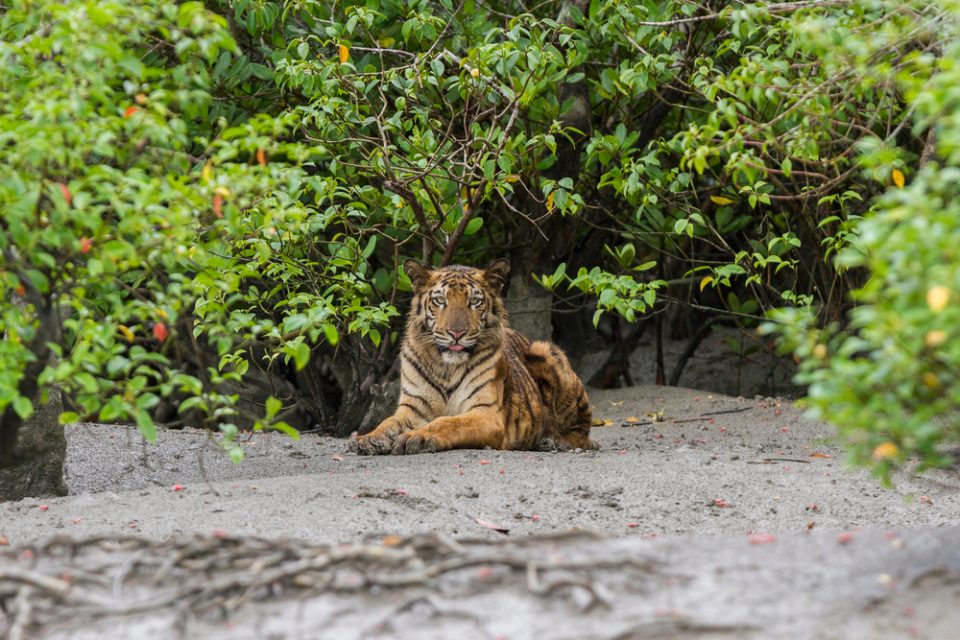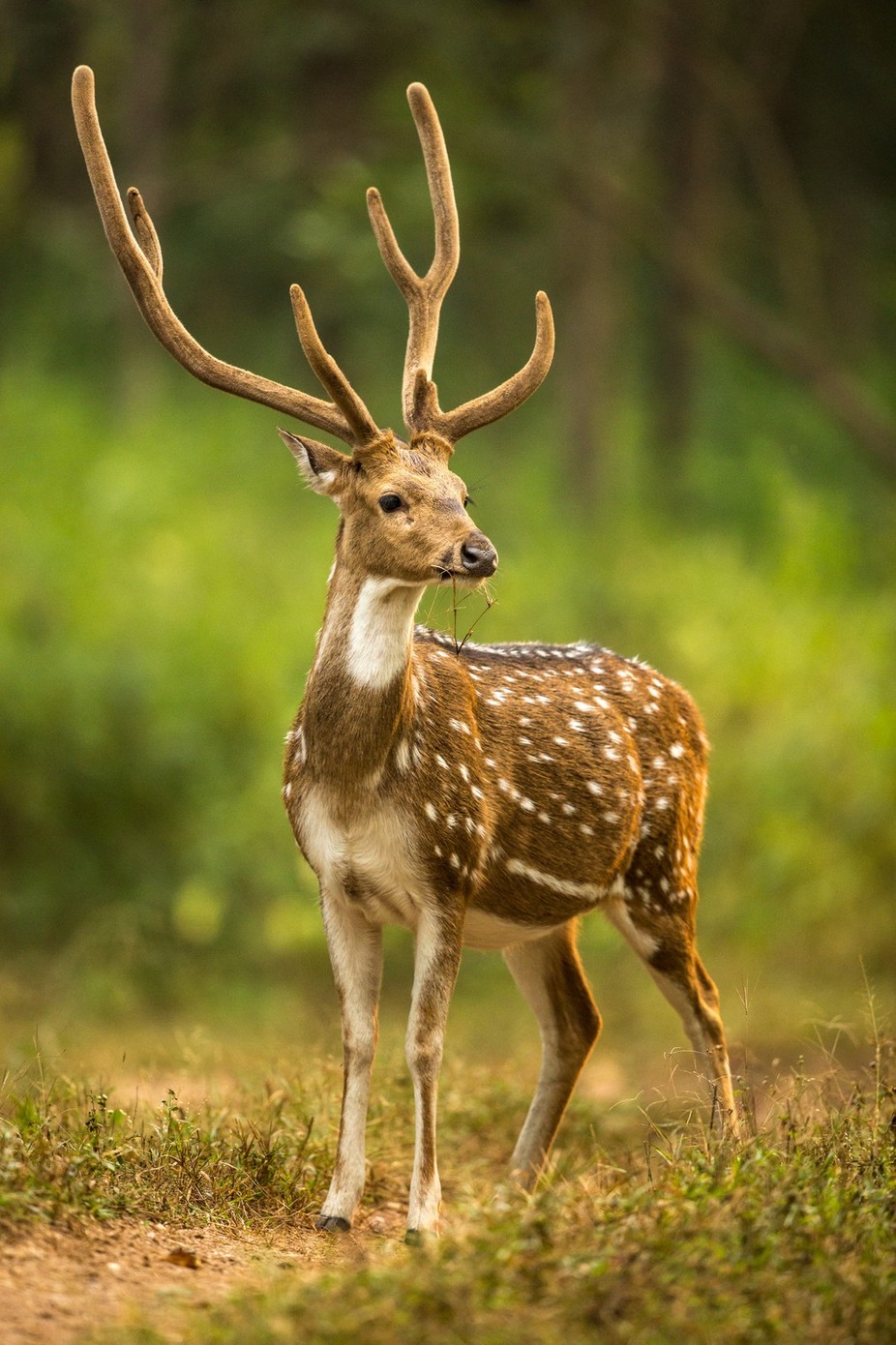... read more people. The jungle visit was great and we could see so many animals
Kunal BasuMarch 17, 2022
... read more a 21 heads office tour for two days and one night . Basically, it was a farewell to our General Manager. Ministry of Defence. Government of India. Following may noted for further: Promised were executed 💯% Timely availability of traveler on pick-up point. Food quality and quantity was very good. Comfortable night stay. Room condition was good. Arrangment of Folk dance 💃 was supab. Recommended for the tour.
Umesh PaswanJanuary 17, 2023
... read more are very well organised to set up this Sunderban tour in terms of fooding lodging and irrespective every things which relates to this particular tour. Me and my family has a mind blowing experience. Thanks Subhabrata Talukdar to you and to your team for giving us a memorable experience.
Sagar BanerjeeJanuary 17, 2023
... read more tour confirmation 7/10. I paid advance for booking after checking the availability. But after making the payment, I was informed the required dates are not available and I had to change my dates. Communication of programs are also not up to the mark. 2. Transfer from Kolkata to Gadkhali & Return 8/10. Onward journey driver was new and not carrying proper documents for Vehicle. Stuck at Ghatakpukur for more than 30 minutes in a police checking. Return journey was better but the vehicle given was too old. 3. Boat Arrangements from Gadkhali 10/10. Good & comfortable. Well decorated boat with well behaved staffs. 4. Accommodation 10/10. Very good place selection and enjoyed the staying. This point you will get a bonus point. 5. Food 8/10. First day lunch was awesome but next meals were just below par. Lacking variety. I came to know few other agencies are offering more variants in their service. Finally thanks to all your staffs in the boat and in the hotel. Specially mentioning Tapas, Bapi, your cook and Subrata for their service.
Sibagi GhoshMarch 17, 2022
... read more in a single word. Those who want fresh oxygen I suggest they should go Sundarbon and stay in Sabujdeep. Also get good village experience.
Sounava SamantaMarch 17, 2022
... read more was excellent..inspite some language problem staff were very very humble n cooperative n always willing to serve to our satisfaction...i surely will recommend my friends/ relatives to visit the place once in lifetime through Sonakshi Travels...🙏🙏🙏
Munna DewanJanuary 17, 2023
... read more on board were very cordial and co-operative. The food served was abundant and of good quality and taste. We didn't felt when the whole day passed away. Complete value for money. I would recommend everyone should have a try with Sonakshi Travels.
S DGMarch 17, 2022
... read more recommend their package
Sanghita RoyMarch 17, 2022
pramod tembhurnikarFebruary 17, 2023
... read more date of departure our resort also exceptionally good I sincerely thanks to all cruise staff and manager to Mr. Talukdar.
Ashis RoySeptember 17, 2022
Dr. Sikka & associatesJanuary 17, 2023
... read more bus that was allotted to us for taking us to the boat and we boarded it from Science City. It was a traveller and its was quite spacious and we travelled witout any problem. One thing that need to be looked upon is that there should be a helper with the driver in orderto contact the tourist for boarding the bus. The driver was speaking in his mobile while which can lead to a few problems. 2) Launch/Boat - It was quite big, spacious, the bathrooms were clean and the crews on board are very welll behaved. My 3 year old son really enjoyed the boat ride throughout the journey. 3) Resort - Some maintenance work is required in the rooms of the resort where we stayed at night. Things like ceiling fan regulator was not working, the flush in the wash room was not working and the room are not properly cleaned. It seemed to me that the room where I stayed was cleaned a long time back. 4) Food - The foods that were served to us was very well cooked. They were not at all spicy, not at all stale. Every time we were served hot and fresh foods. They also arranged food for my 3 year old son as per his requirement. 5) Employees/Crews - They are very well behaved, helpfull and always serving us by giving their level best.
20th Millenium KidMarch 17, 2022
... read more staff ( Bapida, Bhaskarda and Uttamda). Special thanks to Talukdar Babu for taking care of everything. Highly recommended.
rupendu banerjeeMarch 17, 2022
... read more of staff was very good
DEV KUMAR PYNEDecember 17, 2022
Gourav GhoshJanuary 17, 2023
... read more staff is always up to the mark. Thank you all.
Rupak BhattacharjeeJanuary 17, 2023
... read more local people was truly a fun filled surprise.
Pronami SarkarMarch 17, 2022
... read more and the boat ride were upto another level. Thank you so much for this wonderful treat. Looking forward to visit again. 😊
CHANDNI NASKARDecember 17, 2022
... read more very beautiful ❤️👍🏻
Sandeep MukherjeeMarch 17, 2022
... read more family including senior citizens and kids and had a nice experience. Thank you Mr. Talukdar and team.
Koushik PandaApril 17, 2022
... read more dismantled as the driver uses it impulsively :) Definitely recommended...
Indraneil GhoshJanuary 17, 2023
Partha Sarathi MajumderFebruary 17, 2023
HRITURAJ CHAKRABORTYOctober 17, 2022
... read more cottage were excellent. Subrat dada was extremely well informed about the forests. His knowledge helped us a lot. Extremely grateful🙏
Shradha Suman SatpathyMarch 17, 2022
... read more end point by professional guides who displayed very courteous behavior. definitely talukdar ji will be my preferred choice for all trips in future as well.
Auditro Hi-Fi SystemsDecember 17, 2022
... read more team members for making our trip memorable one.
Alaya NayakMarch 17, 2022
... read more 10th to 12th of December, 2021 ( 2 nights 3 days package). I take pleasure in sharing my/ our experience with Mr Suvabrata ( Sonakshi Travels to us means Mr Suvabrata). # Mr Suvabrata, a perfect gentleman, with polite behaviour, understanding/ empathetic & extremely helpful nature. # Well organized & hastle free tour. # Polite & helpful staffs. # Punctuality is a batch.... whether it's transport, food, sight seeing, arrival or departure, everywhere time schedule was perfectly maintained. # Well designed itinerary & all places covered providing flexibility to the visitors. # Neat & clean car & boat. We were lucky to have a boat for ourselves. Hearty thanks to Mr Suvabrata for the unexpected surprise. # Place of stay was clean, beautiful & comfortable with all basic necessities including hot water. # Delicious food was served both veg & non-veg. # Pocket friendly package. No hidden charges or extra money demanded. Words will fall short to express my appreciation for MR SUVABRATA (SONAKSHI TRAVELS) & his TEAM. No one ( staffs) wore a frown throughout the trip & left not a single area for complaint. Once again I, on behalf of my family & friends, convey my wholehearted thanks to Mr Suvabrata & team. Looking forward to join you for some other trip.
Manisha Roy Chowdhury GhantiMarch 17, 2022
... read more for the tour. They provide us a car and launch for this trip. It was very organised trip.
Faiz AhmedMarch 17, 2022
Raghavendra MunghateDecember 17, 2022
... read more group tours were available Mr Talukder arranged a customized tour for us & we were a little apprehensive as the two of us would be traveling alone . But he assured us about our safety & other facilities & truly everything was beyond our expectations. Right from our pickup, boat tours, hotel accommodation & food everything was well arranged. We have come back with sweet memories. Thank you Mr Talukder & every one at Sonakshi tours.
Leena MhatreMarch 17, 2022
... read more boat is undercover with green carpet,so it'is looking beautiful,all management are peaceful Jumur dance is wonderful our all member danced with Jumur dancers we are all coming a sweet memories. Thanks to continue Mr Talukder.
Avijit SarkarMarch 17, 2022
... read more care of every group member as per the need, especially the elderly ones. I travelled with the parents and the staff members made the trip super comfortable for them as well. Thanks to each one of them!! 😊🙏 Would highly recommend Sonakshi Travels for the Sundarban trip.
Shuchita MitraMarch 17, 2022
... read more with Mr.Suvabrata Talukder.We were 13 heads (including 3 senior citizen and 2 child of 5 years old).It was a programme from Howrah to Howrah (railway station). Yesterday (13th November 2021) we returned from our trip. Overall experience was awesome.Communication with Mr. Talukder over phone before journey came in reality through the entire tour in every respect. Manager Subrata and other staff of boat along with the staff of the resort was very helpful and polite . Behaviour of the staff was very good. Food quality was really good .Not to much spicy but tasty , quantity was sufficient.The resort we stayed (Sabujdieep) was good /clean/safe and a small walking from jetty where we dropped from boat.One evening we enjoyed tribal music and dance in the resort. We along with my co- travellers enjoyed the tour with amazing experience ,kept beautiful moments and memories for life time with us. Everything was perfect. Arrangements in every angle was Wonderful. I strongly suggest and recommend everyone to enjoy your tour with this Sonakshi Travel (Sonarpur).
Anjan RayMarch 17, 2022
... read more did a fantastic job. Wish them all the very best.
Avik RoyJanuary 17, 2023
... read more food with rustic touch...You're at a right place..Being at a place which is remote, Dinner variety options may be limited but enough to satisfy you..I had Aged people n kid travelling with me and they were taken good care..The accommodation & boat ride were very comforting n all the staffs, tour guide were helpful..I will recommend them to Families, friends for sure.
Arunima RoyMarch 11, 2023
... read more boat as well as car was also good. We thank you very much and want to refer in future to our friends n relatives.
K. MadhuNovember 17, 2022
... read more served us very well. Thank you for all your services.
Shaily GuptaMarch 17, 2022
... read more package. Here are few points I would like to mention regarding the tour. PROS: 1) The tour organiser, Mr Talukdar gave us a very clear account of the package and there were no hidden cost. 2) We were appointed a manager ( Mr Subrata) during the tour, who was very polite in his dealings. Since I was travelling with my 4 yr old daughter, I had requested him to make few extra arrangements ( in meal) for her ….for which I never had to remind him again and all my requirements were taken care off. 3 ) since we were only 3 families travelling on one boat, we had enough space to ourselves as compared to other boats I saw during the trip were overly crowded. 4) Food was good and the preparation was quite homely. 5)As we had to spend considerable amount of time on the boat…. I was little apprehensive about the cleanliness of the washroom on the boat. But to my surprise, the washroom was sparkling clean. CONS: 1) Though the hotel we were made to stay was very well located… but the rooms were very basic. Rooms are newly made but not very well maintained. The floor of the rooms felt like they were not dusted and mopped in days.There were cobwebs here and there and bathroom had few centipedes. To my opinion..rooms could have been better than what was provided. Overall, it was a well organised trip and Mr Talukdar kept checking on us during the trip which I truly appreciate. We thoroughly enjoyed. And I would certainly recommend Sundarban Travel to my friends and family.
Vaishali SenguptaMarch 17, 2022
... read more people, beautiful presentation of dance and songs to beautiful boat and boatmen with guide. A journey with100% fulfilment. Willing to go again and again. Thanks a lot Sundarban Travel Jyotirmoy Chakraborty Chairman Ispat Cooperative Hospital
JYOTIRMOY CHAKRABORTYMarch 17, 2022
Tripti DasJanuary 17, 2023
The Wonders of Sundarban National Park A Comprehensive Guide to its Unique Wildlife
Introduction to Sundarban National Park
Sundarban National Park , is located in the delta region of India and Bangladesh. Spanning over 10,000 square kilometers, it consists of a vast network of tidal waterways, mudflats, and mangrove forests. Sundarban is home to a rich variety of flora and fauna, including numerous rare and endangered species. In this comprehensive guide, we explore the unique wildlife that inhabits the Sundarban National Park , providing an in-depth look into its diverse ecosystem.
Royal Bengal Tigers in Sundarban National Park: The Majestic Feline
The Sundarban National Park is famous for its population of Royal Bengal Tigers (Panthera tigris tigris ). Known for their powerful build, stunning coat, and exceptional swimming abilities, these tigers have adapted to living in the mangrove forests and saline water channels. They are known to have a unique characteristic – the ability to consume saline water, which is uncommon among big cats.
Population and Territory The park houses approximately 100 Royal Bengal Tigers, with their territories extending into the Bangladesh part of the Sundarbans. These elusive predators have a diverse diet, feeding on various prey, such as deer, wild boar, and even fish and crabs.
Saltwater Crocodiles in Sundarban National Park : The Formidable Reptiles
Sundarban is also home to the world’s largest living reptiles – the Saltwater Crocodiles (Crocodylus porosus ). These fearsome predators can grow up to 23 feet in length and weigh over 1,000 kilograms. They inhabit the brackish water channels and muddy banks, feeding on a wide range of prey, including fish, birds, and mammals.
Sundarbans’ Avian Diversity: A Birdwatcher’s Paradise The Sundarban National Park boasts a remarkable variety of bird species, making it an ideal destination for birdwatchers and wildlife enthusiasts. With over 200 recorded bird species, the park offers a diverse range of habitats for avifauna. Some noteworthy bird species found in the park during your Sundarban tour include the:
Black-Capped Kingfisher (Halcyon pileata )
Brown-Winged Kingfisher (Pelargopsis amauroptera )
Grey-Headed Lapwing (Vanellus cinereus )
MangroveWhistler (Pachycephala cinerea )
White-Bellied Sea Eagle (Haliaeetus leucogaster )
Lesser Adjutant Stork (Leptoptilos javanicus )
Masked Finfoot (Heliopais personatus )
In addition to these striking bird species, migratory birds from Central Asia, Siberia, and other regions visit the park during winter, further enhancing its avian diversity.
Aquatic Marvels: Dolphins and Turtles
Sundarban is home to unique aquatic species, including the endangered Ganges River Dolphin (Platanista gangetica ), locally known as Shushuk. These dolphins have adapted to living in the murky waters of the delta and are one of the few freshwater dolphin species in the world.
The park also serves as a nesting ground for several marine turtle species, including the Olive Ridley Turtle (Lepidochelys olivacea ) and the Green Sea Turtle (Chelonia mydas ). These turtles lay their eggs on the sandy beaches of the delta, and their hatchlings make their way to the sea after emerging.
Deer and Monkeys in Sundarban National Park: Other Essential Inhabitants
The park is home to a variety of deer species, such as the Spotted Deer (Axis axis ) and the Barking Deer (Muntiacus muntjak ). These herbivorous mammals play a crucial role in the ecosystem by serving as prey for the Royal Bengal Tigers and other predators.
The park also provides a habitat for the Rhesus Macaque (Macaca mulatta ), a common monkey species found in the region. These intelligent primates live in social groups and can often be spotted foraging for food in the mangrove forests.
Endangered Species and Conservation Efforts Sundarban is a sanctuary for numerous endangered and vulnerable species. The park’s conservation efforts focus on habitat preservation, combating poaching, and raising awareness about the importance of biodiversity. Some of the endangered species found in the park include the:
Fishing Cat (Prionailurus viverrinus )
Estuarine Crocodile (Crocodylus porosus )
River Terrapin (Batagur baska )
Indian Python (Python molurus )
Sundarban National Park is a testament to the incredible biodiversity of our planet. From the majestic Royal Bengal Tigers to the elusive Saltwater Crocodiles, the park is a haven for wildlife enthusiasts and nature lovers alike. Through concerted conservation efforts and responsible Sundarban tourism , we can ensure that the unique flora and fauna of the Sundarbans continue to thrive for generations to come.














